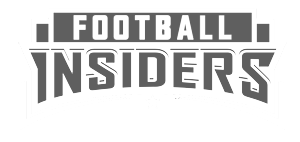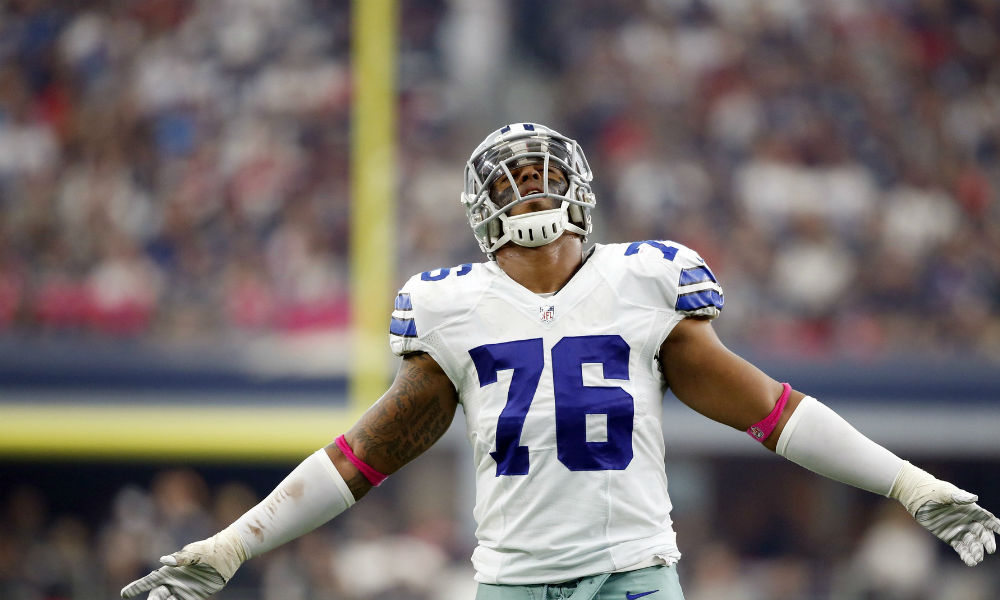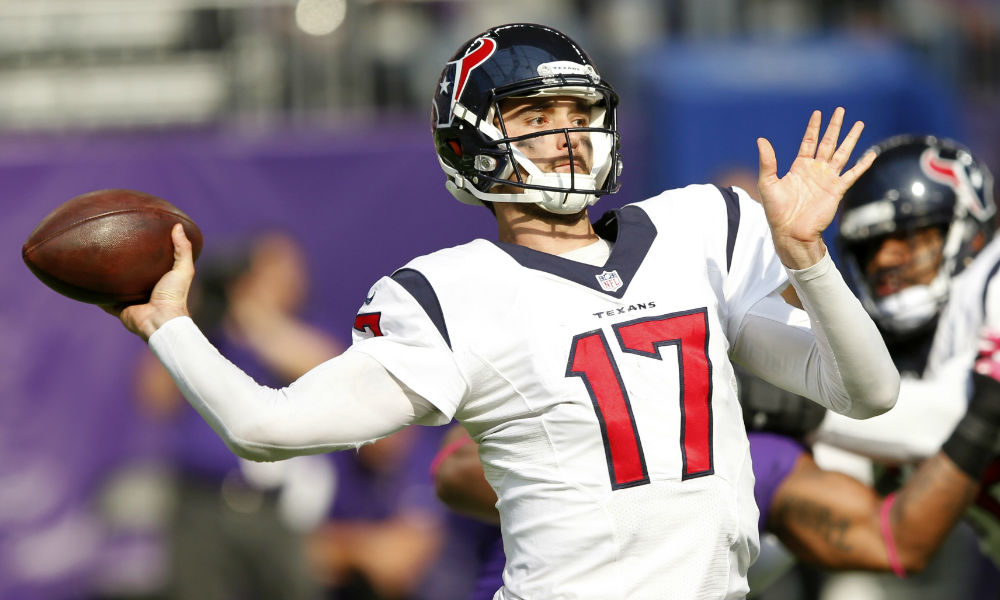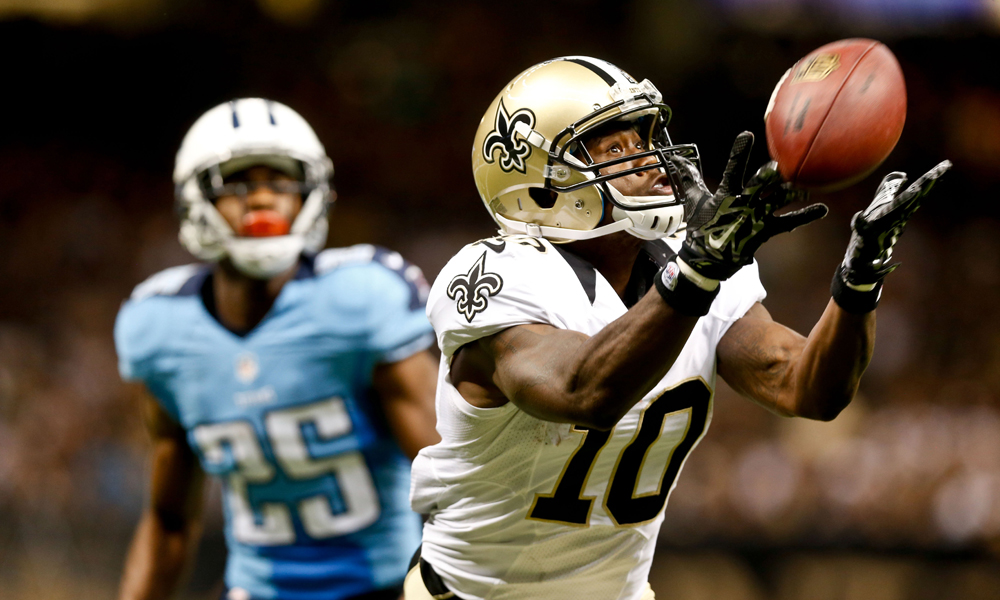News
2015 NFL Draft: Who has most to gain & lose at Combine?
When high school students apply to college, they rely on their grade point average and extracurricular activities, but that’s not always quite enough. Admissions departments need SAT and ACT scores, or in other words, they want to know how students test. High school transcripts and grades aren’t on the same level around the country with different curriculum in different parts of the country. But standardized testing puts all students on a level playing field.
That’s the NFL scouting combine.
The 320-plus invited prospects who will travel to Indianapolis for the 2015 NFL scouting combine this week represent 24 college conferences, 115 NCAA teams and 32o-plus different situations and sets of game tapes. But for one week, Feb. 17-23, they will all be evaluated in the same environment at Lucas Oil Stadium.
The NFL combine could be divided into four critical areas that NFL teams will focus on: agility tests and drills, one-on-one interviews, medical evaluations and verified measurements. Below is a look at notable prospects with the most to gain or lose in each category.
AGILITY TESTS AND DRILLS
WR Phillip Dorsett, Miami (Fla.): Entering the combine, Dorsett is the favorite to burn up the track and run the fastest 40-yard dash at Lucas Oil Stadium. He claims that “anything under 4.3 (seconds)” is his goal.
WR Sammie Coates, Auburn: Coates will win the weigh-ins for the position with his chiseled frame and he has a good chance to win the workouts as well. He has above average top-end speed with the long strides to get vertical in a hurry and will create buzz with his 40-yard dash.
WR Devin Smith, Ohio State: Not only is Smith fast, but he has the lower body explosion that will test well with the vertical and broad jump tests. He was the state of Ohio’s long jump champ out of high school, also running a 10.56 100-meter dash.
WR Mario Alford, West Virginia: With Kevin White’s breakout season in 2014, Alford went somewhat overlooked, although he led the Mountaineers in yards per catch (14.5) and touchdowns (13), using his speed and change of direction skills to stretch the field as a receiver and return man.
OT T.J. Clemmings, Pittsburgh: A good-sized athlete at 310 pounds, Clemmings started his career on defense as a pass rusher before moving to the offensive line in 2013. He is still raw in several areas, but there is no questioning his athleticism and movement skills.
DE/OLB Vic Beasley, Clemson: A former tight end, Beasley moved to pass rusher and was a nuisance for opposing blockers, running circles around offensive tackles with quickness and closing burst. His exact size dimensions will be important as well, but it’s his speed numbers that will receive the headlines.
DE/OLB Bud Dupree, Kentucky: Similar to Beasley, Dupree started at tight end before moving to defense, using his athleticism to launch off the line of scrimmage to penetrate the backfield. And similar to Beasley, he should turn heads in every drill for a 265-pounder.
DE Danielle Hunter, LSU: A unique specimen, Hunter has a tall, long frame with a quick ignition out of his stance and light-footed movements. He is very much a work in progress as a pass rusher, but Hunter’s workout results will show why scouts are highly intrigued with his athletic upside.
DL Arik Armstead, Oregon: A freakish two-sport player in college, Armstead suited up for the Ducks on the football field and basketball court his first two years at Oregon before deciding to focus on football. At 6-feet-7 and 295 pounds, Armstead will test off the charts for an athlete his size.
LB/SS Shaq Thompson, Washington: Thompson played on both offense (running back) and defense (linebacker) for the Huskies with versatile athleticism and skills for a 230-pounder. That quickness and agility will likely stand out during drills at Lucas Oil Stadium.
CB Ronald Darby, Florida State: Darby led his high school to the Maryland 3A state championship in track, winning the 100- and 200-meter dashes, also earning a gold medal in the relay at the 2011 World Youth Championships in France. Simply put, this kid can fly.
CB Nick Marshall, Auburn: Auburn’s starting quarterback the past few seasons, Marshall is making the transition to cornerback and will be an enticing prospect with his size (6-2, 205) and athleticism. But his 40-yard dash will be important to show his long-range speed in order to match up with NFL wide receivers.
ONE-ON-ONE INTERVIEWS
QB Jameis Winston, Florida State: Winston’s off-field transgressions have been well documented and he better be ready to answer the myriad questions NFL teams have for him. Clubs have only have 15 minutes to interview each prospect so Winston can expect the tough questions to come early and often.
RB Thomas Rawls, Central Michigan: A Michigan transfer, Rawls was arrested for stealing a 62-year-old woman’s purse at a casino last April, which raises a number of obvious concerns. Before transferring to CMU in 2014, he managed only 333 rushing yards in three seasons in Ann Arbor and couldn’t set himself apart in a crowded Michigan backfield.
RB Mike Davis, South Carolina: Although injuries played a significant part in his struggles, Davis seemed to have “Clowney Syndrome” in 2014, showing up with some bad weight and spotty effort. Davis’ older brother (RB James Davis) went through this process a few years ago and will be able to offer him insight.
RB Karlos Williams, Florida State: Although he wasn’t formally charged, trouble seemed to follow Williams this past year as he was investigated for domestic abuse and his part in a drug deal gone bad. It was a very disappointing year for Williams both on the field and off.
WR Dorial Green-Beckham, Oklahoma: Another player with a well-known rap sheet, Green-Beckham hasn’t been seen on the field in over a year and teams will be interested to probe his mindset and attitude. There might not be a more talented prospect in this draft class but his flags are bright red.
WR DaVaris Daniels, Notre Dame: Entering the 2014 season, Daniels was expected to be the No. 1 receiver for the Irish after 49 catches, 745 yards and seven touchdowns as a junior. But he decided to cut ties with the program after he was one of five Notre Dame players suspended last season for academic impropriety.
OT Tayo Fabuluje, TCU: Fabuluje is a talented blocker, but he enters the NFL with several question marks. He sat out three seasons with multiple transfers on his résumé, bouncing between TCU and BYU, and his fluctuating weight has also been a concern with questionable practice and conditioning habits.
OT Donovan Smith, Penn State: Although he appeared to flip the switch at the Senior Bowl, Smith left Happy Valley with a poor reputation as a worker. He has “lazy tendencies” according to several NFL scouts and his work ethic and football character will be heavily scrutinized.
DE Frank Clark, Michigan: A mid-round prospect based on his play, Clark was arrested and dismissed from the program last November for a domestic abuse incident. It was just the latest strike for the former Wolverine who has a long rap sheet including a second-degree conviction for felony home invasion. It’s hard to see Clark getting drafted, but any hopes at damage control will start at the combine.
CB Marcus Peters, Washington: The interview process is crucial for Peters, who was dismissed from the Washington program in early November for multiple verbal and physical run-ins with the coaching staff. He hasn’t received high marks from the current Huskies coaches or the former staff, bringing up strong concerns regarding his attitude and maturity.
CB P.J. Williams, Florida State: A New York Times article broke the story that Williams was involved in an October 2014 hit-and-run accident, but he somehow avoided charges. The story didn’t receive a lot of traction, but it will be a topic that is frequently brought up when teams sit down with the possible first-rounder.
MEDICAL EVALUATIONS
QB Connor Halliday, Washington State: In Mike Leach’s air-raid offense, Halliday was on pace to shatter several passing records in 2014 before a broken tibia and fibula against Southern California in November ended his college career. He has been the forgotten man in this quarterback class, but positive reports from the combine could change that.
RB Todd Gurley, Georgia: Gurley is a special talent and should snap the two-year drought of first-round running backs, but his draft projection is up in the air after his ACL tear in November. Nonetheless, as long as his rehab proves to be on track when trainers examine his knee in Indianapolis, Gurley should still hear his name in the top 32 picks and be ready for game action in August.
RB T.J. Yeldon, Alabama: Yeldon battled through nagging ankle and hamstring issues in 2014 and had his least productive season for the Tide, never quite looking like himself. NFL teams will want to know if the medical staff in Indianapolis finds any long-term damage that will be a concern for his pro future.
WR Dres Anderson, Utah: Scouts haven’t seen Anderson, who is the son of former NFL receiver Flipper Anderson, on the field since October when he suffered a knee injury that prematurely ended his time at Utah. He isn’t expected to be ready to run in Indianapolis, but teams will soon receive an update on his rehab process.
WR DeVante Parker, Louisville: Parker is arguably the most talented receiver in the 2015 draft class, but durability concerns are an issue after several college injuries, including surgery on his left foot that sidelined him for the first seven games of his senior season.
WR DeAndre Smelter, Georgia Tech: At 6-3 and 222 pounds, Smelter has an enticing skill set for the NFL, but he suffered a torn ACL in the regular-season finale against Georgia. NFL teams will have an opportunity to find out how his knee rehab is progressing while at the combine.
TE Jeff Heuerman, Ohio State: Although he started 14 games in 2014, Heuerman managed only 17 catches and was limited most of the season with a stress reaction to his surgically repaired foot from March 2014. If healthy, Heuerman is in the discussion to be the top senior prospect at his position.
OT Cedric Ogbuehi, Texas A&M: After a senior season where it appeared he was playing not to get hurt, Ogbuehi unfortunately suffered a torn ACL in Texas A&M’s bowl game. His lower body movement skills are first-round worthy, but now his draft projection is a question mark.
OG Arie Kouandjio, Alabama: Like his younger brother Cyrus last year, the medical portion of the combine might prove to be more important for Kouandjio than any drill or interview. He started 27 straight games for Alabama, but underwent multiple knee surgeries to both knees as an underclassman.
C Hroniss Grasu, Oregon: There is no questioning his toughness as Grasu played through several injuries in 2014 despite not being at 100 percent health. But his medical evaluation will better detail the damage and whether or not any issues are worrisome long-term.
DE Owamagbe Odighizuwa, UCLA: A possible first-round prospect, Odighizuwa should test off the charts in Indianapolis, but his medical reports will be even more imperative for his future after a pair of hip surgeries in 2013, one on the left side and one to his right hip.
DT Leonard Williams, Southern California: Williams, who is NFLDraftScout.com’s No. 1-rated player in the 2015 NFL Draft, played through two torn labrums in 2014. He might not be able to lift at the combine due to the shoulder rehab, but more importantly, the medical examinations will be able to tell how serious the issue is.
DT Jordan Phillips, Oklahoma: Few human beings at 6-6 and 330 pounds can move like Phillips, but his medical reports will be crucial to his draft grade. He started the first four games in 2013 before he was out for the remainder of the season due to back surgery, which addressed a nagging issue. Phillips stayed healthy in 2014, but his back durability needs a thumbs up from trainers before a team drafts him.
CB Ifo Ekpre-Olomu, Oregon: Durability was never an issue for Ekpre-Olomu after starting 40 consecutive games for the Ducks, but he suffered a serious knee injury during practice a week before the Rose Bowl. Ekpre-Olomu isn’t considered an elite athlete at the position so his knee rehab will be closely inspected.
DB Byron Jones, Connecticut: A good-sized cornerback prospect, Jones was lost for the season in October after a left shoulder injury required surgery. He didn’t participate in the Senior Bowl, but hopes to be healthy enough to compete during NFL combine drills.
VERIFIED MEASUREMENTS
QB Marcus Mariota, Oregon: With 27 career fumbles and concerns about his grip and ball control as a passer, Mariota’s verified hand size will be a much anticipated number. Smaller hands (9 inches or smaller) don’t preclude a quarterback from playing at a high level in the NFL, but it might help explain some of Mariota’s struggles.
RB Duke Johnson, Miami (Fla.): One of the several underclass running backs in the second-round discussion, Johnson’s lean body type leads to durability concerns, holding your breath after every hit. Is his frame maxed out at 205 pounds?
OL Brandon Scherff, Iowa: The Hawkeyes’ left tackle has a skill set ideally suited to bump inside to guard, similar to Zack Martin a year ago. And if Scherff’s arms measure under 33 inches, that might confirm it for several teams.
WR Rashad Greene, Florida State: There is no questioning Greene’s toughness and receiving skills, but does he have the frame to ever carry 190-plus pounds of good weight?
CB Kevin Johnson, Wake Forest: A healthy scratch from the Senior Bowl, Johnson is an impressive player with natural cover skills and above average height for the position. But he has a pipe-cleaner frame with very lean limbs so teams will be eager to get his exact measurements.
DT Michael Bennett, Ohio State: One of the unsung heroes of the Buckeyes’ national title run, Bennett was a consistent inside penetrator down the stretch for Ohio State in 2014. But his lack of size might limit him at the next level to a three-technique role in a four-man front.
DE Mario Edwards, Florida State: Edwards was already a big player when he arrived at Florida State around 270 pounds, but he seemed to be carrying some bad weight on his frame as a junior last season. After lining up as a defensive end for the Seminoles, he might eat his way into a new position at defensive tackle if his weight continues to increase north of 300 pounds.
Dane Brugler is an analyst for www.NFLDraftScout.com, a property of The Sports Xchange distributed in partnership with CBSSports.com.
News
Buccaneers admit mistake, boot Aguayo
Source: Mike Florio of ProFootballTalk
Powered by WPeMatico
News
Did Bucs put too much pressure on Aguayo?
Source: Mike Florio of ProFootballTalk
Powered by WPeMatico
News
Broncos holding their breath on Derek Wolfe
Source: Mike Florio of ProFootballTalk
Powered by WPeMatico




